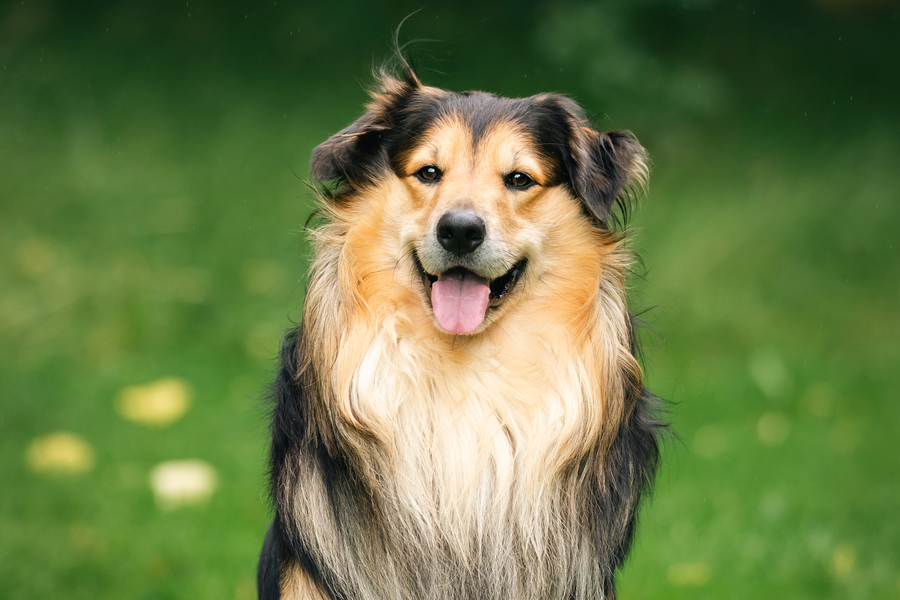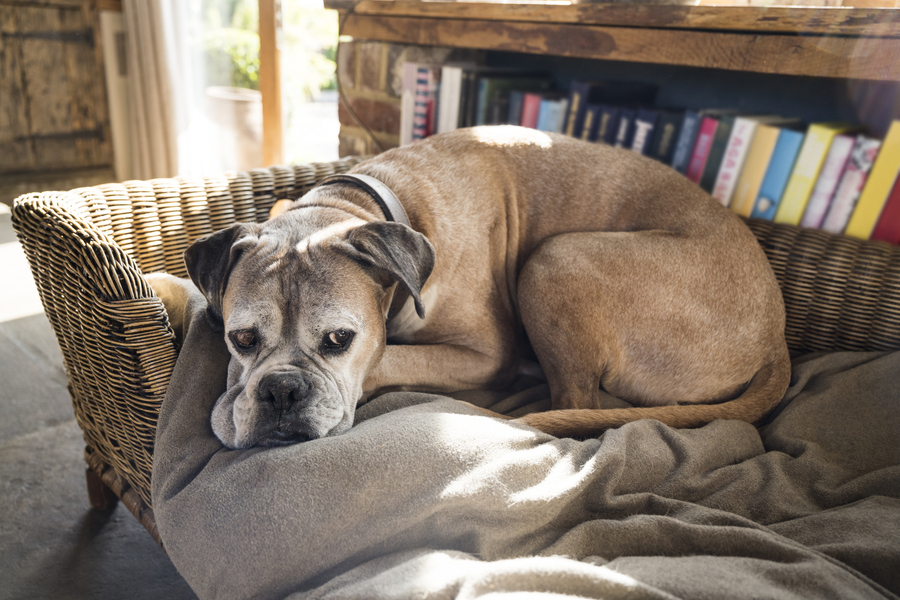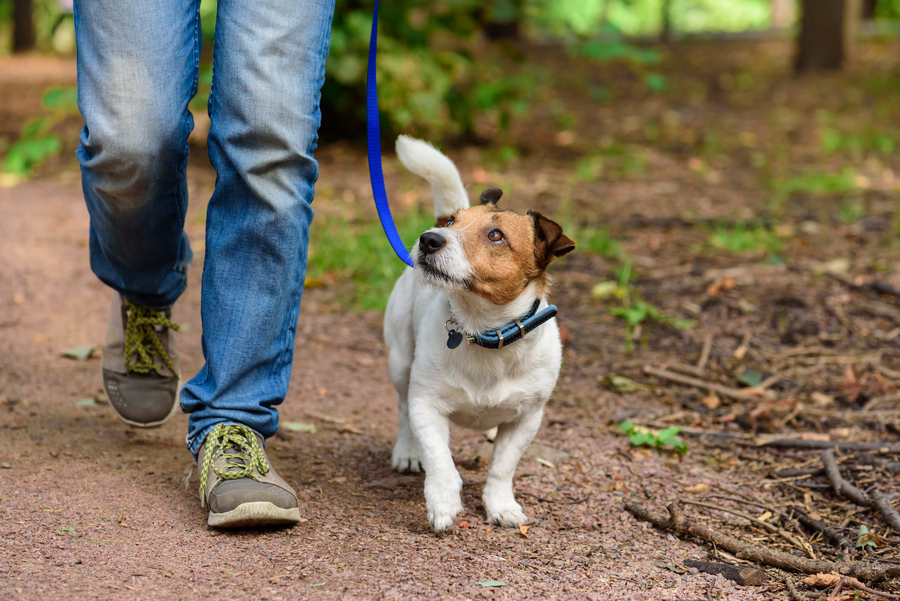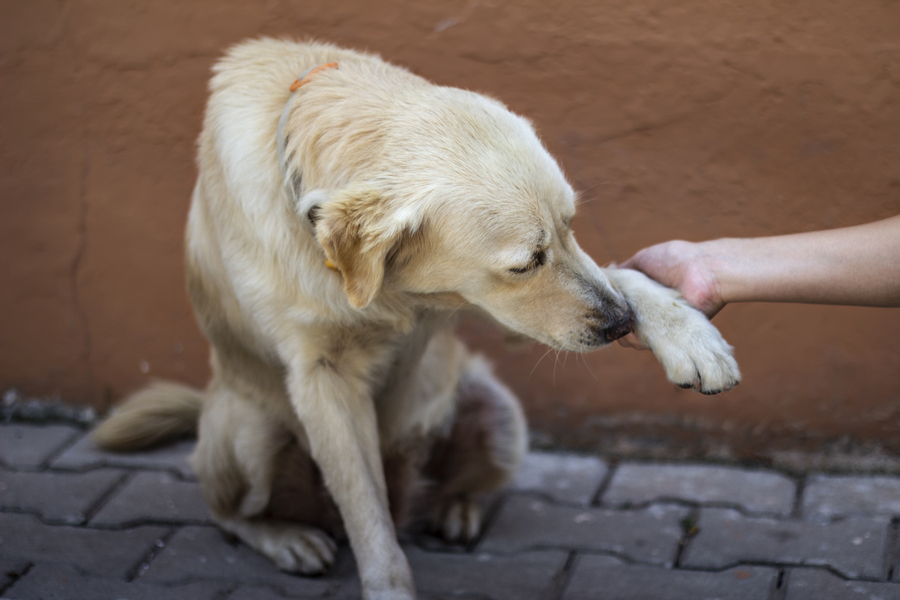
Pain in dogs
What is pain?
Pain is an unpleasant signal that something hurts. It is often multifactorial and involves physical and emotional stress. For example, a dog that undergoes a painful procedure to remove a torn claw in a consultation will experience physical pain around the claw but also may experience emotional feelings of fear and confusion. Pain is considered a welfare concern so should always be addressed. Pain can be categorised as either acute or chronic.
Acute pain usually occurs for a short period of time because of disease, injury, or a medical procedure or surgery.
Chronic pain is ongoing pain, usually because of a long-term disease such as arthritis.
Signs of pain in dogs
Dogs are unable to tell us where it hurts or how severe the pain is, so recognising the signs can sometimes be challenging. Often dogs will instinctively try to hide signs of pain so it is important to be vigilant so that you can pick up on subtle indicators such as:

Vocalisation
Dogs in ongoing chronic pain may become quiet and withdrawn, however, those suffering from intense or sudden acute pain may let you know by the sounds they make. Whimpering, groaning, yelping and panting may all be signs of pain.
Changes in movement
A reluctance to move or a change in the way your dog moves might be an indication of pain. A leg or paw injury may be noted by a visible limp however in some cases it may be much more subtle. For instance, a change in gait such as ‘bunny hopping’ (moving both back legs at the same time) could be indicative of pain.


Changes in posture
An painful dog may change the way they carry themselves to try and alleviate some of the pain that they are experiencing. This may be apparent in the way they sit; for instance, they may splay their legs apart or sit with them positioned to one side to take pressure off the area that hurts. Similarly, if the dog seems tense or hunched over when they stand it could indicate that they are experiencing pain in their limbs, hips, or shoulders or back.
Changes in behaviour or demeanour
Pain often causes a change in behaviour or demeanour. Sometimes a dog may seek closeness and comfort. In other instances, they may become more aloof, distancing themselves from the family and becoming more withdrawn or less willing to be touched. A change in usual sleeping habits may also indicate that a dog is in pain, for instance they may become more restless because they are unable to get comfortable.
If a dog is experiencing acute pain, possibly from an internal problem, recent injury, or surgery they may try to prevent you from touching the painful area or even show uncharacteristic aggression. You may also notice muscle twinges, shaking or licking/biting at a particular area.

What to do if you think your dog is in pain
It is good practice to conduct regular nose to tail checks on your dog, this will familiarise you with what is ‘normal’ for your pet. You should be looking and feeling around your dog’s body for any sign of injury, swelling, heat, tenderness, lumps, or bumps.
If you have any concerns over your dog’s health, or are worried that your dog is in pain, always consult your vet as soon as possible.
Managing pain in dogs
There is a variety of licensed medications available to treat and manage pain in dogs that can be prescribed by your vet. It is important to adhere to the prescription instructions given by your vet to ensure the drug can work effectively and to prevent unintended adverse reactions to the medication.
Your vet may also recommend short or long-term lifestyle changes to help alleviate pain, this may include limiting exercise or making home adaptions to help make your animal more comfortable.
If your pet is undergoing surgery, it is very likely that the vet will build pain relief into their anaesthetic plan. Often a pain medication will be administered at the start of the procedure so that it is in the system prior to any painful stimulus, your vet will likely follow on with further pain medication either to be given at the clinic or for you to give at home.




